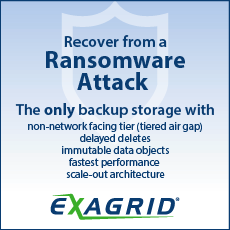R&D: Separation and Optimization of Encryption and Erasure Coding in Decentralized Storage Systems
Simulation results showing that proposed method reduces traffic by 20% compared to out-of-the-box solution.
This is a Press Release edited by StorageNewsletter.com on February 13, 2025 at 2:00 pmFuture Generation Computer Systems has published an article written by Marcell Szabó, Department of Telecommunications and Artificial Intelligence, Faculty of Electrical Engineering and Informatics, Budapest University of Technology and Economics, Műegyetem rkp. 3., Budapest, H-1117, Hungary, and High Speed Networks Laboratory, Műegyetem rkp. 3., Budapest, H-1117, Hungary, Ákos Recse, Faculty of Informatics, Eötvös Loránd University, Pázmány Péter stny. 1/C., Budapest, H-1117, Hungary, Róbert Szabó, Traffic Lab, Ericsson Research, Magyar tudósok körútja 11., Budapest, H-1117, Hungary, Dávid Balla and , Markosz Maliosz, Department of Telecommunications and Artificial Intelligence, Faculty of Electrical Engineering and Informatics, Budapest University of Technology and Economics, Műegyetem rkp. 3., Budapest, H-1117, Hungary, and High Speed Networks Laboratory, Műegyetem rkp. 3., Budapest, H-1117, Hungary.
Abstract: “Entering the cloud storage market requires a high upfront investment, thus it is dominated by a few players with existing capacity. Decentralized cloud storage solutions can disrupt the status quo by allowing businesses and individuals to sell their unused storage capacity, reducing the need for large upfront investments in service infrastructure. We show that network operators providing such service can significantly decrease the traffic volume carried on the transport network, which is essential when serving mobile users, while maintaining high data security by implementing our proposed solution, of leveraging controlled replication inside the core network. Upon data uploads encryption and erasure encoding are separated, with the latter moved inside the network, enabling the arbitrary replication of storable data pieces without straining the access network. We present simulation results, showing that the proposed method reduces traffic by 20% compared to the out-of-the-box solution. Moreover, we elaborate on optimal multi-proxy placements and even optimal storage node choosings in complex ISP networks, where deep data penetration is desired, by giving ILP optimization methods and results, achieving minimal overall network load and maximum data security.“














 Subscribe to our free daily newsletter
Subscribe to our free daily newsletter


